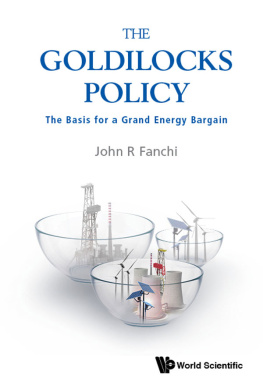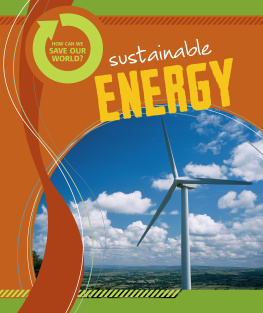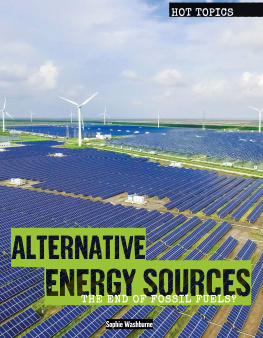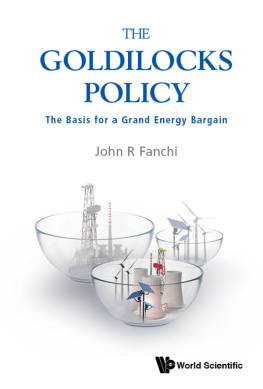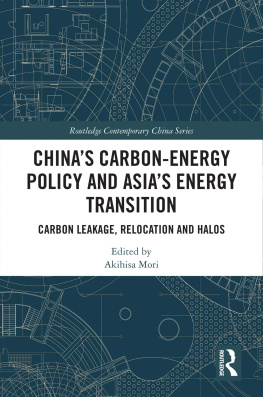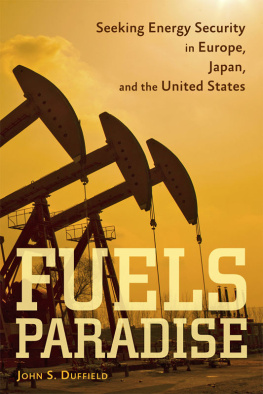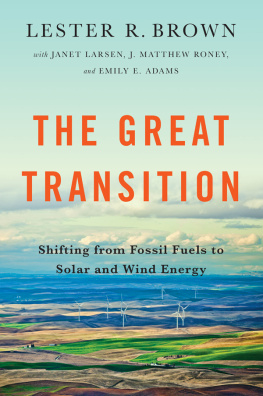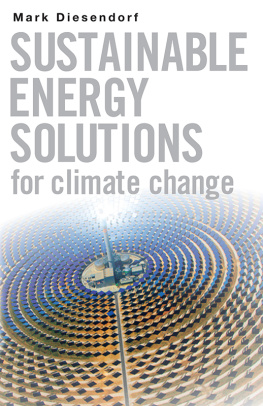

Published by
World Scientific Publishing Co. Pte. Ltd.
5 Toh Tuck Link, Singapore 596224
USA office: 27 Warren Street, Suite 401-402, Hackensack, NJ 07601
UK office: 57 Shelton Street, Covent Garden, London WC2H 9HE
British Library Cataloguing-in-Publication Data
A catalogue record for this book is available from the British Library.
THE GOLDILOCKS POLICY
The Basis for a Grand Energy Bargain
Copyright 2019 by World Scientific Publishing Co. Pte. Ltd.
All rights reserved. This book, or parts thereof, may not be reproduced in any form or by any means, electronic or mechanical, including photocopying, recording or any information storage and retrieval system now known or to be invented, without written permission from the publisher.
For photocopying of material in this volume, please pay a copying fee through the Copyright Clearance Center, Inc., 222 Rosewood Drive, Danvers, MA 01923, USA. In this case permission to photocopy is not required from the publisher.
ISBN 978-981-3276-39-0
ISBN 978-981-3277-44-1 (pbk)
For any available supplementary material, please visit
https://www.worldscientific.com/worldscibooks/10.1142/11159#t=suppl
Printed in Singapore
To my grandsons Cameron and Caleb, and future generations
Preface
This book presents a roadmap to sustainable energy. Society is in a period of transition from one energy mix to another. We are witnessing a passionate debate between advocates of competing energy strategies on many levels: technological, political, and geopolitical. In this book, we make the case for a grand energy bargain that recognizes the need to protect the environment from the combustion of fossil fuels while protecting national and global economies during the transition from fossil fuels to sustainable energy.
The Goldilocks Policy: The Basis for a Grand Energy Bargain is written for anyone who consumes energy. You will learn
what energy is and why energy is important to our quality of life
that we should consider changing our energy mix because our current energy mix relies on finite resources that may be affecting our envi ronment
that we have historical guidance for establishing a period of transition to a new energy mix
about a plan called the Goldilocks Policy for energy transition that is designed to guide the transition to a sustainable energy portfolio that provides cost-effective energy while protecting the environment
that several domestic and global obstacles must be overcome before a comprehensive energy policy can succeed
what the future of energy could be if we have the discipline and patience to implement the Goldilocks Policy.
I thank K. Wayne Fanchi for useful comments.
John R. Fanchi, Ph.D.
November 2018
Contents
1.What is energy?
Energy is the primary focus of our discussion, so it is worthwhile spending a little time clarifying what we mean by energy. Energy is the ability to do work. There are many forms of energy. Two of the most common forms of energy are potential energy and kinetic energy. Potential energy is the ability to produce motion, and kinetic energy is the energy of motion. Other forms of energy include heat (thermal energy), light (radiant energy), chemical energy, electrical energy, biological energy, nuclear energy, and gravitational energy.
An important characteristic of energy is its ability to transform from one form of energy to another. For example, mechanical energy of motion can be transformed into electrical energy using a generator, while nuclear fission plants convert mass to electrical energy.
Fossil energy, nuclear energy, and renewable energy are considered primary energy sources because they can provide energy directly. Carriers of energy are produced from primary sources of energy and include electricity and hydrogen. Both electricity and hydrogen are considered carriers of energy because they can be used to store and deliver energy in a useful form.
There are many sources of energy, but they are not all capable of providing energy on a scale that is needed either nationally or globally. The viability of an energy source as a large scale source of energy needs to be considered in any analysis of its suitability as a key component in an energy mix. The viability of an energy source is not just a question of quantity available, but is also a question of how that energy can be captured and delivered to an end user efficiently and cost-effectively. An extensive discussion of different energy issues, including the relative merits of different energy types, is provided in Fanchi and Fanchi [2017]. We review the importance of energy and the need to undertake a transition to a sustainable energy mix in the rest of .
Climate change is discussed in available to motivate a transition away from fossil fuels. The transition does not have to be abrupt and catastrophic, however. Historical energy transitions can be a guide to a reasonable duration for making an orderly transition.
Our future energy mix depends on choices we make, which depends, in turn, on energy policy. Competing visions for reaching a sustainable energy mix and the Goldilocks Policy for Energy Transition are discussed in . The essence of the Goldilocks story is that the best option is often bounded by less desirable options.
We show in that the duration of the energy transition should be just right, and we describe how to estimate the amount of time we have to make a transition to a sustainable energy mix. We need to adopt a reasonable plan of action that reduces uncertainty for businesses and innovators with predictable public policy while simultaneously minimizing environmental impact.
If we exercise strategic vision, discipline, and patience, we can overcome the obstacles to successful implementation of a grand energy bargain. There are many obstacles that stand in the way of successful implementation of the Goldilocks Policy for Energy Transition. Several key obstacles are discussed in .
2.How much energy do we consume?
World energy consumption from 1980 to 2015 is shown in Figure 2-1. The figure shows the global reliance on fossil fuels, which includes coal, oil and natural gas. The world consumed approximately 575 Quads of energy in 2015, and the United States consumed approximately 98 Quads in 2015 [US IEO, 2018]. A Quad is one quadrillion BTU of energy. One BTU (British Thermal Unit) of energy is the amount of heat energy needed to raise the temperature of one pound of water 1F. A BTU is equivalent to 1055 J of energy in the metric system. The Quad is a unit of energy that is suitable for expressing energy consumption and production on a global scale.
Figure 2-1. World Annual Energy Consumption by Fuel Type from 1980 to 2015. [US IEO, 2018]
We can categorize energy sources as either nonrenewable or renewable. Nonrenewable energy is energy that is obtained from a source at a rate that exceeds the rate at which the source is replenished. By contrast, renewable energy is energy that is obtained from a source at a rate that is less than or equal to the rate at which the source is replenished. Examples of nonrenewable energy sources include fossil fuels and nuclear fuel such as uranium, while renewable energy sources include hydropower, wind, and solar energy.

